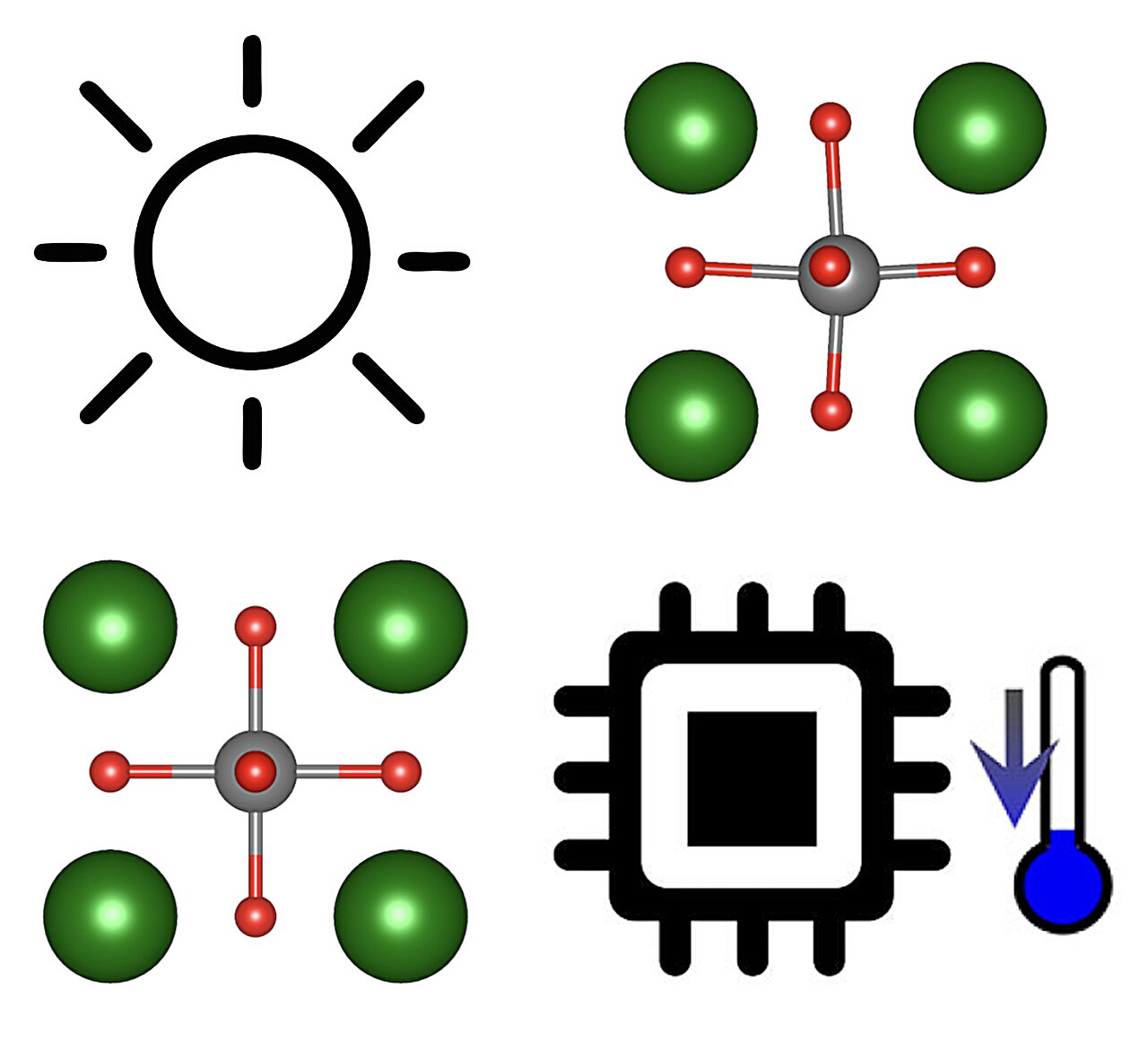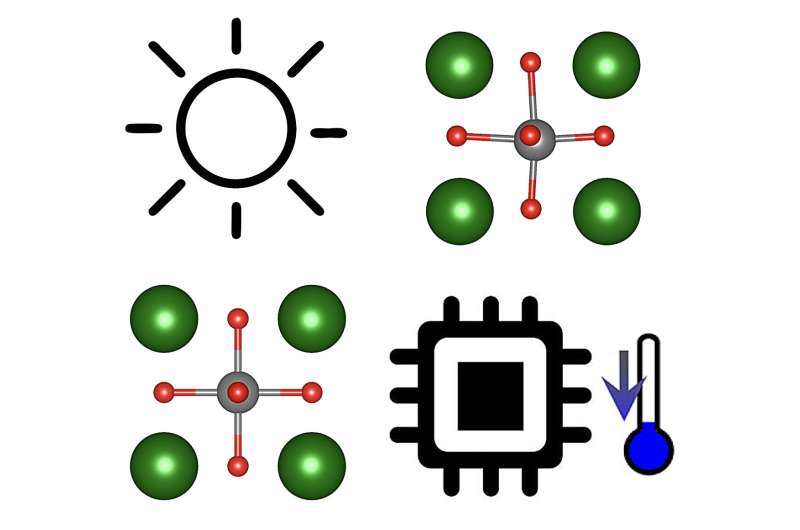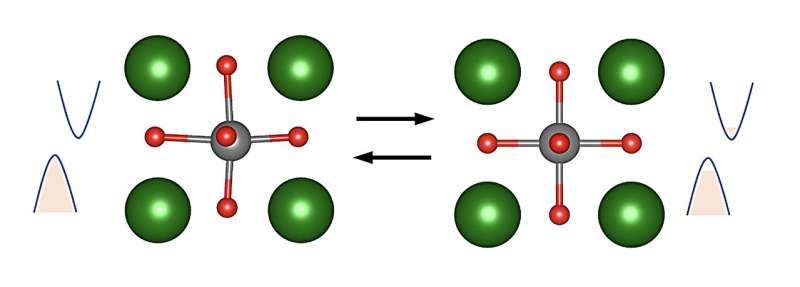

Solid-state cooling is a promising alternative cooling technique that does not rely on the use of gases or liquids, like conventional refrigeration systems, but instead utilizes the properties of solid materials to refrigerate. This alternative cooling approach could be highly energy-efficient and could help to refrigerate things without releasing greenhouse gases into the air.
Despite their potential, conventional caloric effects have been found to be difficult to effectively implement in real-world refrigeration devices. This is because they are only considerable within a narrow range of temperatures and have specific requirements that limit the possibilities of the resulting cooling systems.
Researchers at Institut de Ciència de Materials de Barcelona and Universitat Politècnica de Catalunya recently proposed a possible solution for overcoming the limitations of existing solid-state cooling systems. Their paper, published in Physical Review Letters, theoretically demonstrates that some ferroelectric perovskites could exhibit giant photocaloric (PC) effects, which persist across a far wider range of temperatures than conventional caloric effects.
“Our inspiration came from two different sources,” Claudio Cazorla, co-author of the paper, told Phys.org. “On one hand, we were aware of the possibility of inducing phase transitions in ferroelectrics by shining light on them and had already explored this idea for proposing new thermal switch mechanisms. On the other hand, we had an interest in solid-state cooling and caloric materials, which are promising for substituting current refrigeration technologies based on compression/decompression cycles of environmentally harmful gases.”
Caloric materials typically used to realize solid-state cooling undergo phase transitions under external fields. These transitions change the entropy of these materials and can be leveraged to induce refrigeration and heat pumping.
Drawing from their interest in ferroelectric and caloric materials, Cazorla and his colleagues set out to explore the possible existence of PC effects in ferroelectric materials, which would essentially enable solid-state cooling via light irradiation. The primary objective of their recent study was to theoretically characterize these PC effects and determine whether they could be of practical interest for the development of refrigeration systems.
“Although the idea of inducing phase transitions in ferroelectrics with light has been around for some time, I randomly ran into it in a workshop in 2021,” Riccardo Rurali, co-author of the paper, told Phys.org.
“It immediately captured my attention, because I thought it could be used to design a thermal switch (my main ‘research business’), where by light absorption one could commute back and forth a high and a low thermal conductivity state, Luckily, Claudio Cazorla realized that the same light-induced phase transition was accompanied by a huge change in entropy and thus it could be used to design an extremely efficient PC cycle, which largely outperforms the thermal switch that we previously proposed.”
PC effects could have various advantages over other caloric effects, such as magnetocaloric, electrocaloric and mechanocaloric effects. The most notable is that PC effects are sizeable and can be exploited over a much wider temperature range.

In fact, the effects outlined in the team’s paper have been theoretically demonstrated to remain large over vast temperature intervals, of the order of 100K. In contrast, conventional caloric effects are only active over narrow temperature intervals of the order of 10K.
“The condition for the light-induced PC effect to work is that the system changes from a ferroelectric to a paraelectric state, that is, it loses its spontaneous electric polarization, upon the absorption of light,” explained Cazorla. “Therefore, the temperature interval in which PC effects can be observed matches the temperature range in which the material is ferroelectric, which may amount to several hundreds of degrees Kelvin.”
In their paper, Cazorla, Rurali and their colleagues predict the existence of PC effects in some ferroelectric materials. Notably, these effects are hypothesized to occur in only a few polar materials, including the archetypal ferroelectrics BaTiO3 and KNbO3.
“The fact that the triggering field [for] PC effects is the absorption of light implies that there is no need for depositing electrodes on the surfaces of the ferroelectric material,” said Cazorla. “This may greatly simplify the design and manufacture of the corresponding practical setup. In addition, PC effects are very well suited for miniaturization since the necessary source of light may be achieved with lasers.”
The PC effects theoretically demonstrated in this recent paper could soon be examined further and probed experimentally. Cazorla, Rurali and their colleagues suggest that these effects would be particularly well-suited for cooling applications at the micro-scale, such as the refrigeration of central processing units (CPUs) and other circuit components.
Moreover, as these effects are hypothesized to persist over vast temperature intervals, ranging from room temperature to absolute zero, they could also be leveraged to achieve cryogenic cooling (i.e., down to ultralow temperatures). Cryogenic cooling could in turn be highly valuable for the realization of quantum technologies.
“At the moment, we are exploring families of materials other than ferroelectrics that may also exhibit light-induced phase transitions with potential for solid-state cooling applications, said Cazorla. “In addition, we are considering the role of dimensionality for bringing PC effects into actual applications (e.g., two dimensional materials and thin films).”
Cazorla, Rurali and their colleagues are now conducting further studies aimed at further assessing the potential of the PC effects they theorized, while also considering potential strategies to leverage them in real-world applications. Their study could inspire other teams to also explore these effects and their potential for improving solid-state cooling.
“We realized that photoinduced charge can suppress other charge ordered states that couple with the lattice structure,” added Rurali. “Currently, we are investigating 2D materials that feature charge density waves (CDW). They are especially promising because, due to their dimensionality, they seem to be better suited to efficiently absorb light.”
More information:
Riccardo Rurali et al, Giant Photocaloric Effects across a Vast Temperature Range in Ferroelectric Perovskites, Physical Review Letters (2024). DOI: 10.1103/PhysRevLett.133.116401. On arXiv: DOI: 10.48550/arxiv.2404.05562
© 2024 Science X Network
Citation:
Theoretical study demonstrates existence of giant photocaloric effects in ferroelectric perovskites (2024, October 10)
retrieved 10 October 2024
from https://phys.org/news/2024-10-theoretical-giant-photocaloric-effects-ferroelectric.html
This document is subject to copyright. Apart from any fair dealing for the purpose of private study or research, no
part may be reproduced without the written permission. The content is provided for information purposes only.